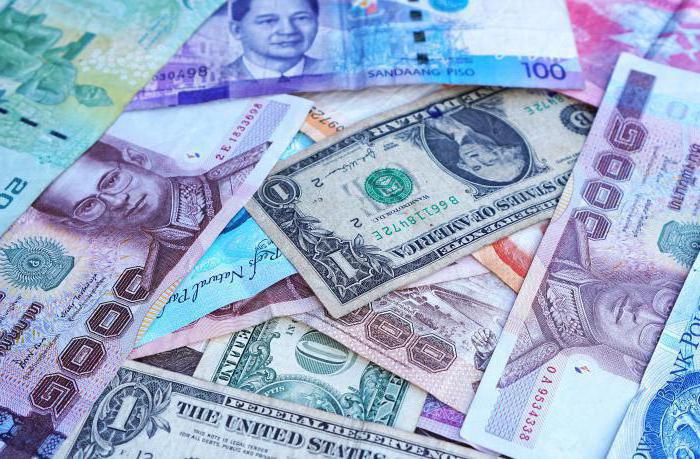Now there is a two-tier banking system throughout the world. Why did different states and governments make their choice in her favor. What is remarkable about such a system? What benefits does it provide? How was a similar financial and credit system formed? All these questions will be answered within the framework of this article.
general information
 How do banks work now? The two-tier banking system has gained recognition and is now generally accepted in the world. What does she include in herself? First of all, the state central bank. He takes the position of regulator. Besides him, there is also a network of commercial financial and credit institutions.
How do banks work now? The two-tier banking system has gained recognition and is now generally accepted in the world. What does she include in herself? First of all, the state central bank. He takes the position of regulator. Besides him, there is also a network of commercial financial and credit institutions.
Level Details
Who is where? Now financial systems are built on this principle:
- First level. Here is the central bank, which is often called the issuing bank. Why? He has a monopoly on the issuance of legal tender in his country. The Central Bank is also tasked with ensuring the stability of the monetary system and other financial institutions in the state.
- Second level. Various types of commercial banks are located here: specialized, universal, savings, investment, consumer, mortgage and industry. In addition to them, this also includes a number of other financial institutions. These are investment and pension funds, insurance and trust companies, pawnshops.
The modern two-tier banking system for us was formed in the English Empire in the second half of the seventeenth century.
How is everything arranged?
 We will not break away from reality and go into theoretical jungle, so the two-tier banking system of the Russian Federation will be considered. It is based on two principles:
We will not break away from reality and go into theoretical jungle, so the two-tier banking system of the Russian Federation will be considered. It is based on two principles:
- Universality.
- Two-level structure.
It is implemented through a clear separation of functions through legislation. The most important object is the Central Bank of the Russian Federation. It represents the first, upper level. The Bank of Russia or the Central Bank are often used as a reduction. His tasks include performing the functions of supervision, monetary regulation, and managing the settlement system.
But there are a number of limitations. So, he is not allowed to directly work in the banking services market, to provide loans directly to organizations and enterprises, and to compete with other financial institutions. Interaction in terms of banking operations is allowed exclusively with legal entities and individuals, who are credit institutions, employees of the Central Bank and the military of the armed forces of the Russian Federation.
The second level is occupied by commercial financial organizations directly involved in settlement, deposit, credit and investment activities. However, they do not have the right to influence the development and implementation of monetary policy. During the implementation of activities, they focus on the Bank of Russia in matters of creating a reserve, the level of capital, interest rates and others. Commercial enterprises must comply with all regulatory requirements of the regulator, otherwise they will be revoked their license. This is how the two-tier banking system of Russia works.
General points
 The legislation, as a rule, provides for the principle of universality for the banking system. What does it mean? Speaking a little differently - the financial institutions have the right to conduct any activity prescribed by law.
The legislation, as a rule, provides for the principle of universality for the banking system. What does it mean? Speaking a little differently - the financial institutions have the right to conduct any activity prescribed by law.
Banks have the right to carry out short-term and long-term commercial and investment operations.The legislation does not provide for their specialization. But they themselves can choose and advance in a certain field, for example, an industrial, rural or innovative bank. In this case, special attention should be paid to legislation. The two-tier banking system provides for a number of cases listed above, a clear distinction.
What do commercial institutions do?
Financial and credit organizations specialize in:
- Accumulations of temporarily free and unused funds, savings and savings.
- Lending to the population, organizations, enterprises and the state.
- Organization and feasible assistance in the calculations in the implementation of financial and economic operations.
- Storage of various valuables.
- Securities transactions.
- Property management of clients with power of attorney.
They also help with:
- Organization of cashless payments.
- Cash storage.
- Organization of cash flow.
- Settlement and cash services.
The history of development
 What is a single-level and two-level banking system? To answer this question, we need to delve deeper into history. The first banks appeared around the thirteenth century on the territory of modern Italy. Initially, some regulatory bodies did not exist. Although the first banks could be influenced by dukes, kings and the like by their status of a person.
What is a single-level and two-level banking system? To answer this question, we need to delve deeper into history. The first banks appeared around the thirteenth century on the territory of modern Italy. Initially, some regulatory bodies did not exist. Although the first banks could be influenced by dukes, kings and the like by their status of a person.
Due to the lack of clear rules, quite often crisis phenomena arose. And in England in the seventeenth century the question was raised whether the creation of a two-tier banking system that would put the whole thing under control could help. No sooner said than done. Indeed, the formation of a two-tier banking system has significantly reduced the number of unpleasant incidents.
But, alas, all the problems have not been resolved. And now various crises periodically arise related to the financial sector - primarily with banks. Until then, a rather weakly interconnected single-level system functioned. But with the emergence of a control center, the number of contacts and common ground began to grow. Now, for a full-fledged activity, a bank needs to be integrated into the global financial system.
Soviet Union Approach
 But a single-level system was recently - in the USSR. What was its feature? In the Soviet Union, almost all the time there was a scheme in which each bank was responsible for a specific sector of activity. So, there was Vnesheconombank (it is now, though in a slightly different format), engaged in servicing foreign economic relations. Separate structures were engaged in work with the agricultural sector, industry, and served the population. It is rather difficult to single out one.
But a single-level system was recently - in the USSR. What was its feature? In the Soviet Union, almost all the time there was a scheme in which each bank was responsible for a specific sector of activity. So, there was Vnesheconombank (it is now, though in a slightly different format), engaged in servicing foreign economic relations. Separate structures were engaged in work with the agricultural sector, industry, and served the population. It is rather difficult to single out one.
This state of affairs was possible only due to the presence of an administrative-command economy. Well, this system has both its advantages and disadvantages compared to what it is now.
Implementation specifics
Worldwide, the banking system is a two-tier. But there are certain specific features. As a rule, everything is managed by the Central Bank. But there are exceptions to this state of affairs.
Take, for example, the US Federal Reserve. Most people think that this is a state structure. But this is not so. Under the guise of the Fed, several banks united on the basis of common goals and objectives. And all the tasks that the Central Bank usually has to carry out are transferred to them.
Was this made wisely? More than a century has passed since the moment when such a two-tier banking system was created, and disputes have not ceased. Critics of this state of affairs recall many recessions and crises, especially those that took place in 1929-1933, as well as from 2007, which began with the United States during the period of the Federal Reserve System.
Work principles
So, the modern two-tier banking system has already been well considered. Let's summarize what was said earlier, paying attention to the basic principles of work:
- Clear legislative delineation of functions.
- The presence of a regulatory center subordinate to the state.
- Mandatory implementation of regulatory orders that come from the Central Bank, the second level participants.
- The independence of financial and credit organizations in the performance of operational activities.
Risk management
 If there is a close relationship, a precedent arises when problems in one country or even a bank can cause a chain of negative consequences. Let's look at the crisis situation that has been going on since 2007.
If there is a close relationship, a precedent arises when problems in one country or even a bank can cause a chain of negative consequences. Let's look at the crisis situation that has been going on since 2007.
Initially, several large banks collapsed in the US market in the middle of the year. This did not seem to be a very significant problem. But after them two large German financial and credit organizations flew to the bottom. It was then that it became clear how everything is interconnected, and that a new, unprecedented crisis has begun to gain momentum. In many ways, he managed to bring down his wave, but with exceptionally large-scale influences of funds that amount to trillions of dollars. But such risks are not only the losses of banks. Together with them, legal and physical persons lose their funds. Yes, and forget that financial institutions were saved at the expense of taxpayers, should not be.
What needs to be done?
It is clear that a two-level system needs to be improved. But here two opposing principles come into conflict:
- Investor funds should be retained.
- It is necessary to provide an opportunity for profit by financial institutions.
Speaking generally and generally, it is necessary to ensure stable and uninterrupted operation. But here is how to do it? Over the search for an answer there are many smart goals. But so far nothing has been found that would inspire confidence and help solve problems. This means that crises will recur.
Conclusion
 Humanity is gradually developing, social mechanisms and institutions are improving. This happens in this case. Originally there was a usury. Then it began to transform into the first banks, which were little similar to those structures that are now. There was practically no relationship between them.
Humanity is gradually developing, social mechanisms and institutions are improving. This happens in this case. Originally there was a usury. Then it began to transform into the first banks, which were little similar to those structures that are now. There was practically no relationship between them.
Also, the first financial institutions often disappeared due to adverse economic conditions, or they were generally organized by fraudsters. This led to the establishment of a regulatory center that oversees supervision. Since the inception of the first Central Bank in England, they have constantly improved, and the tools used by them have been improved. It is possible that someday a model will be invented to avoid these unpleasant moments. After all, the process of evolution constantly continues to move forward.
So, in the same 2007, a number of previously unprecedented methods were first applied. And although many criticize their effectiveness, they allowed to stop the crisis wave and stabilize the situation.